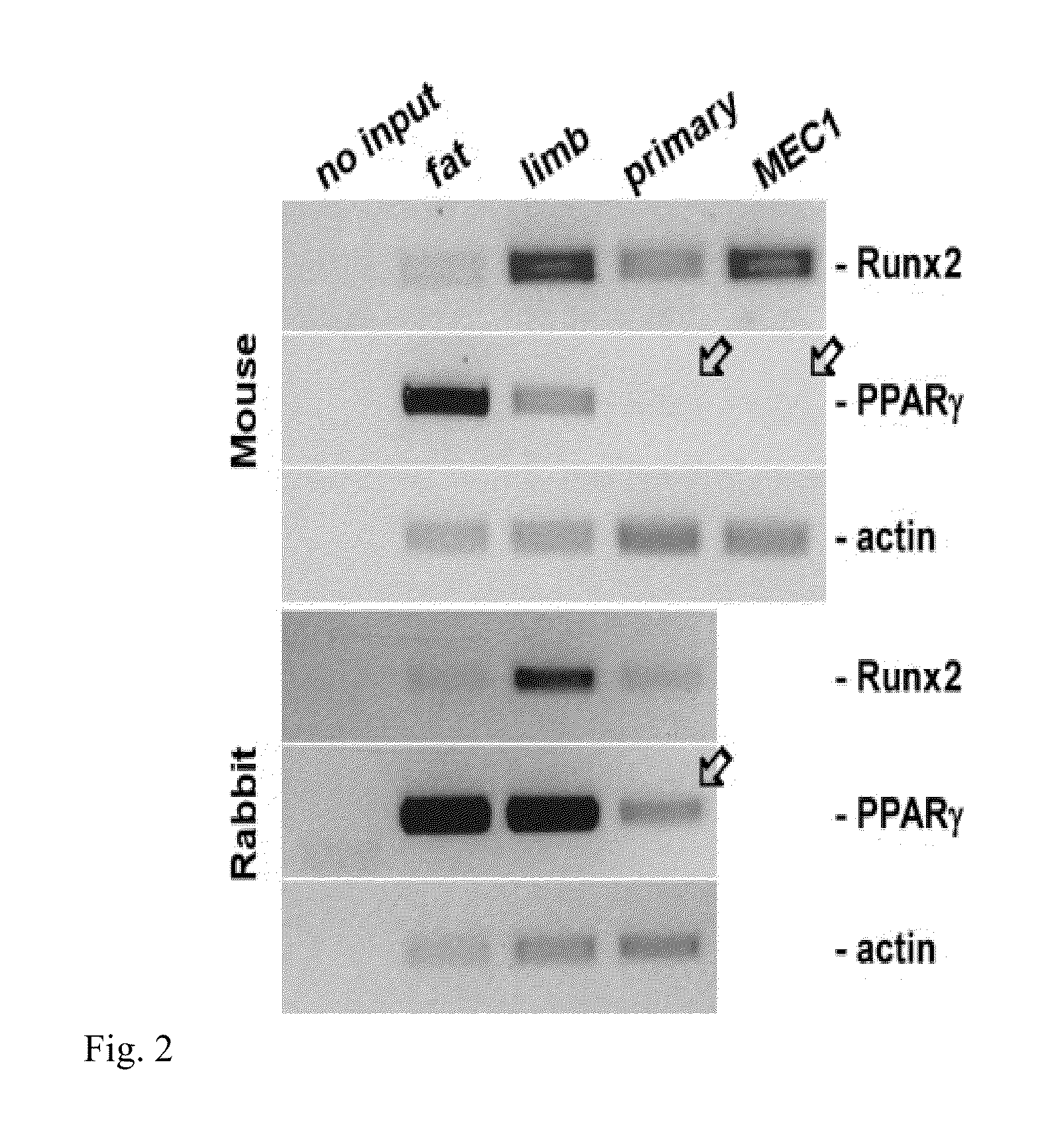Compositions, systems and methods based on the differentiation of epicardial cells to typical and atypical fates
- Summary
- Abstract
- Description
- Claims
- Application Information
AI Technical Summary
Benefits of technology
Problems solved by technology
Method used
Image
Examples
Example
[0017]Two established fates of epicardium-derived cells (EPDCs), referred to herein as “typical fates” of epicardium-derived cells are to become smooth muscle cells or fibroblasts [1], and there is evidence that the choice of fibroblast vs. smooth muscle fate is temporally regulated and occurs even when the cells are still within the epicardium itself [2]. In other parts of the embryo, mesenchymal cells give rise to additional cell types, including osteoblasts and adipocytes.
[0018]One aspect of the present invention is directed to the ability and / or potential of EPDCs to differentiate to fates that are commonly adopted by mesenchymal cells elsewhere in the body, but not currently associated with the epicardium. Specifically, one aspect of this invention is directed to methods, systems and assays relating to adipocyte and / or osteogenic differentiation that are often related to disease or disregulated states, i.e. the “atypical” fates of epicardium-derived cells—as wells as the “typic...
PUM
 Login to View More
Login to View More Abstract
Description
Claims
Application Information
 Login to View More
Login to View More - R&D
- Intellectual Property
- Life Sciences
- Materials
- Tech Scout
- Unparalleled Data Quality
- Higher Quality Content
- 60% Fewer Hallucinations
Browse by: Latest US Patents, China's latest patents, Technical Efficacy Thesaurus, Application Domain, Technology Topic, Popular Technical Reports.
© 2025 PatSnap. All rights reserved.Legal|Privacy policy|Modern Slavery Act Transparency Statement|Sitemap|About US| Contact US: help@patsnap.com



